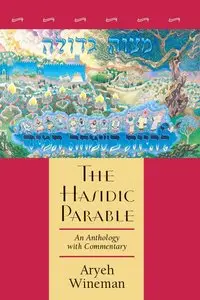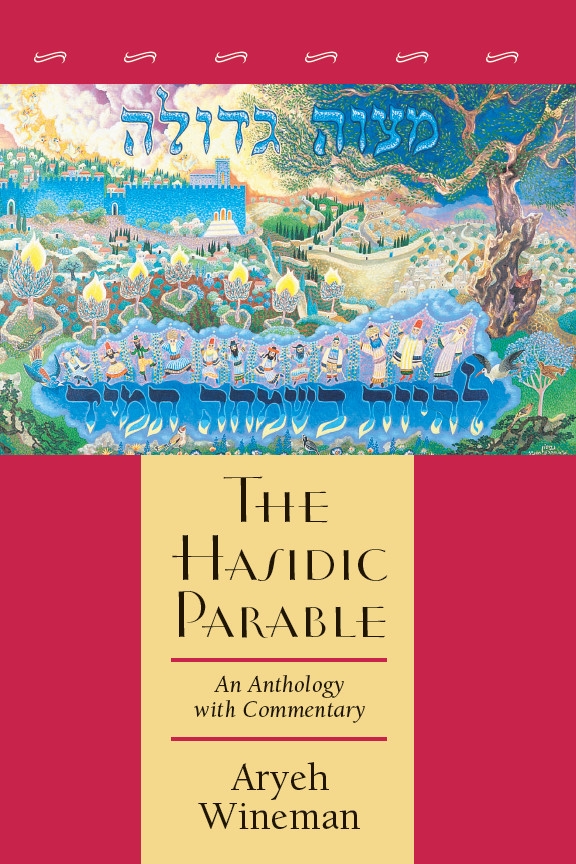Rabbi Aryeh Wineman, "The Hasidic Parable: An Anthology with Commentary"
The Jewish Publ | 2001 | ISBN: 0827607075 | English | PDF | 220 pages | 9.6 Mb
The Jewish Publ | 2001 | ISBN: 0827607075 | English | PDF | 220 pages | 9.6 Mb
The teachers of Hasidism gave new life to the literary tradition of parable, a story that teaches a spiritual or moral truth. In The Hasidic Parable, acclaimed author Aryeh Wineman takes readers through the great works of the hasidic storytellers. Telling parables, explains Rabbi Wineman, was a strategy that the hasidic masters used to foster a radical shift in thinking about God, the world, and the values and norms of religious life. Although these parables date back 200 years or more, they deal with moral and religious themes and issues still relevant today. Each is accompanied by notes and commentary by the author that illuminate their ideological significance and their historical roots and background. These parables have been culled from classical hasidic homiletic texts, chosen because of their literary qualities, their explanation of key concepts in the hasidic world-view, and also because of what they say to us about the conflicts and tensions accompanying Hasidism's emergence and growth.
From Publishers Weekly
A congregational rabbi in Troy, N.Y., Wineman is also a scholar specializing in Kabbalah and Hasidism. He has combined these interests to produce this anthology of Hasidic parables, providing extensive commentary that draws on Kabbalah. Wineman begins with a useful introduction in which he defines parable as "an imaginative story whose meaning refers to something quite beyond itself." (A more useful definition would also include reference to the moral or lesson drawn from the tale.) Wineman next examines the structure of the Hasidic parable and the Hasidic homily, which generally includes a parable. He groups the parables and his analyses into four categories: Paradox and the Unexpected; Redefinitions; Deepening the Implications of Divine Oneness; Echoes; and Transformation of Older Motifs. His classification system is a bit faulty, since there is considerable overlap. Nevertheless, he succeeds in illustrating how Hasidic rebbes of the late 18th and early 19th centuries taught their followers by using allegory to drive home their instruction. Wineman's comments on the parables sometimes wander far beyond their possible meaning as he plunges into Jewish mysticism. However, he has achieved his objective of exploring parables to demonstrate "the preciousness of the spiritual core of Hasidism's worldview and of its value system."
Copyright 2001 Cahners Business Information, Inc.
Review
"Wineman succeeds in illustrating how Hasidic rebbes of the late eighteenth and early nineteenth centuries taught their followers by using allegory to drive home their instruction."
A congregational rabbi in Troy, N.Y., Wineman is also a scholar specializing in Kabbalah and Hasidism. He has combined these interests to produce this anthology of Hasidic parables, providing extensive commentary that draws on Kabbalah. Wineman begins with a useful introduction in which he defines parable as "an imaginative story whose meaning refers to something quite beyond itself." (A more useful definition would also include reference to the moral or lesson drawn from the tale.) Wineman next examines the structure of the Hasidic parable and the Hasidic homily, which generally includes a parable. He groups the parables and his analyses into four categories: Paradox and the Unexpected; Redefinitions; Deepening the Implications of Divine Oneness; Echoes; and Transformation of Older Motifs. His classification system is a bit faulty, since there is considerable overlap. Nevertheless, he succeeds in illustrating how Hasidic rebbes of the late 18th and early 19th centuries taught their followers by using allegory to drive home their instruction. Wineman's comments on the parables sometimes wander far beyond their possible meaning as he plunges into Jewish mysticism. However, he has achieved his objective of exploring parables to demonstrate "the preciousness of the spiritual core of Hasidism's worldview and of its value system."
Copyright 2001 Cahners Business Information, Inc.
Review
"Wineman succeeds in illustrating how Hasidic rebbes of the late eighteenth and early nineteenth centuries taught their followers by using allegory to drive home their instruction."





